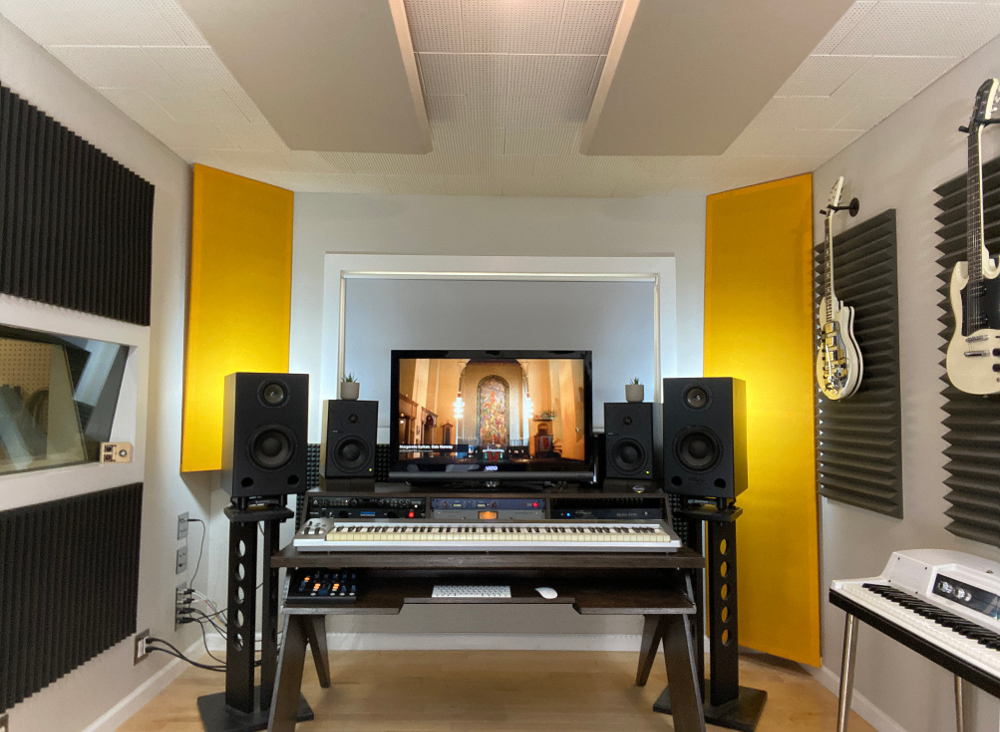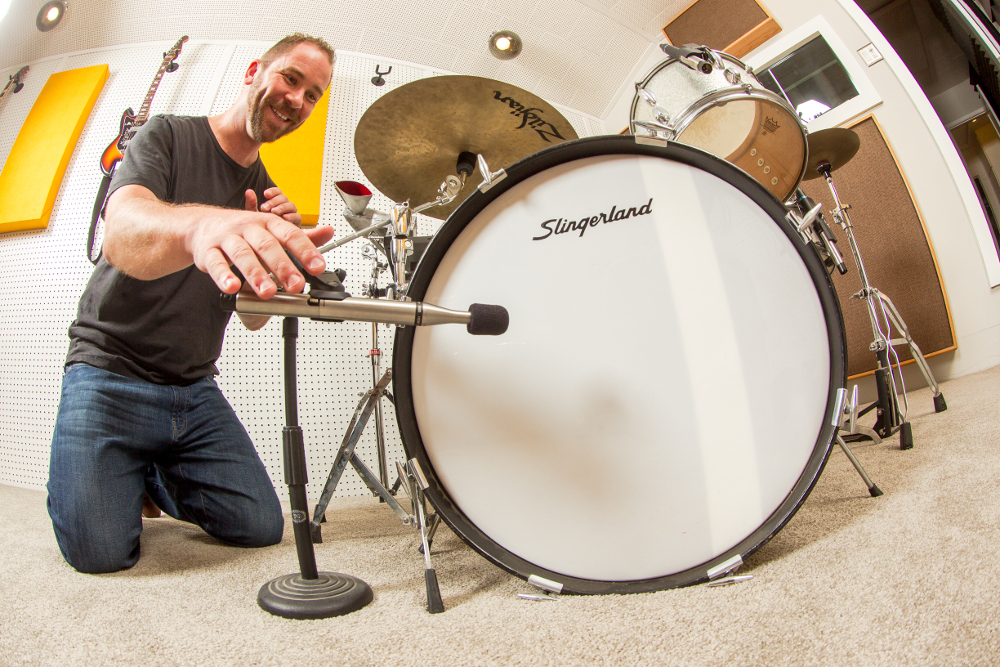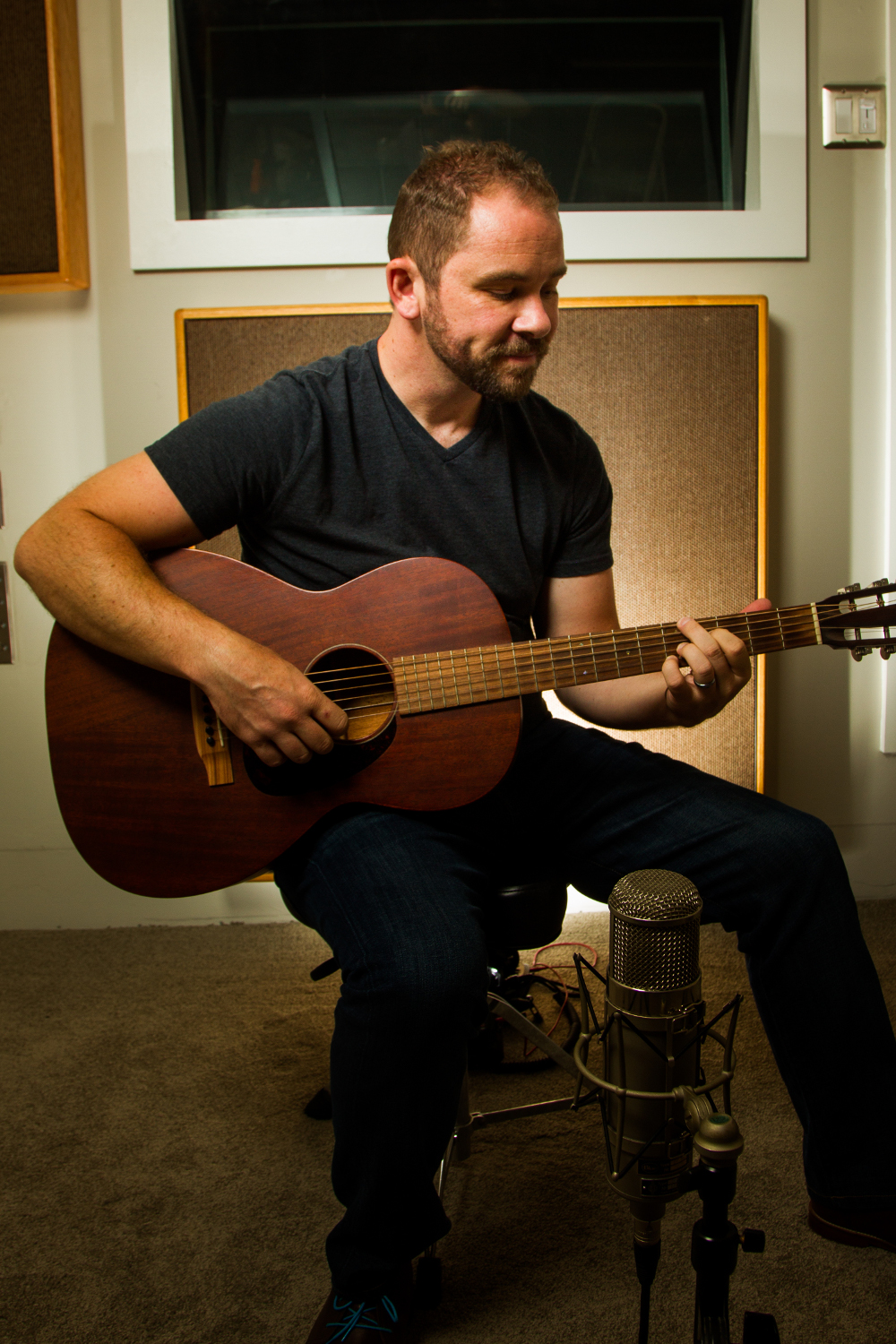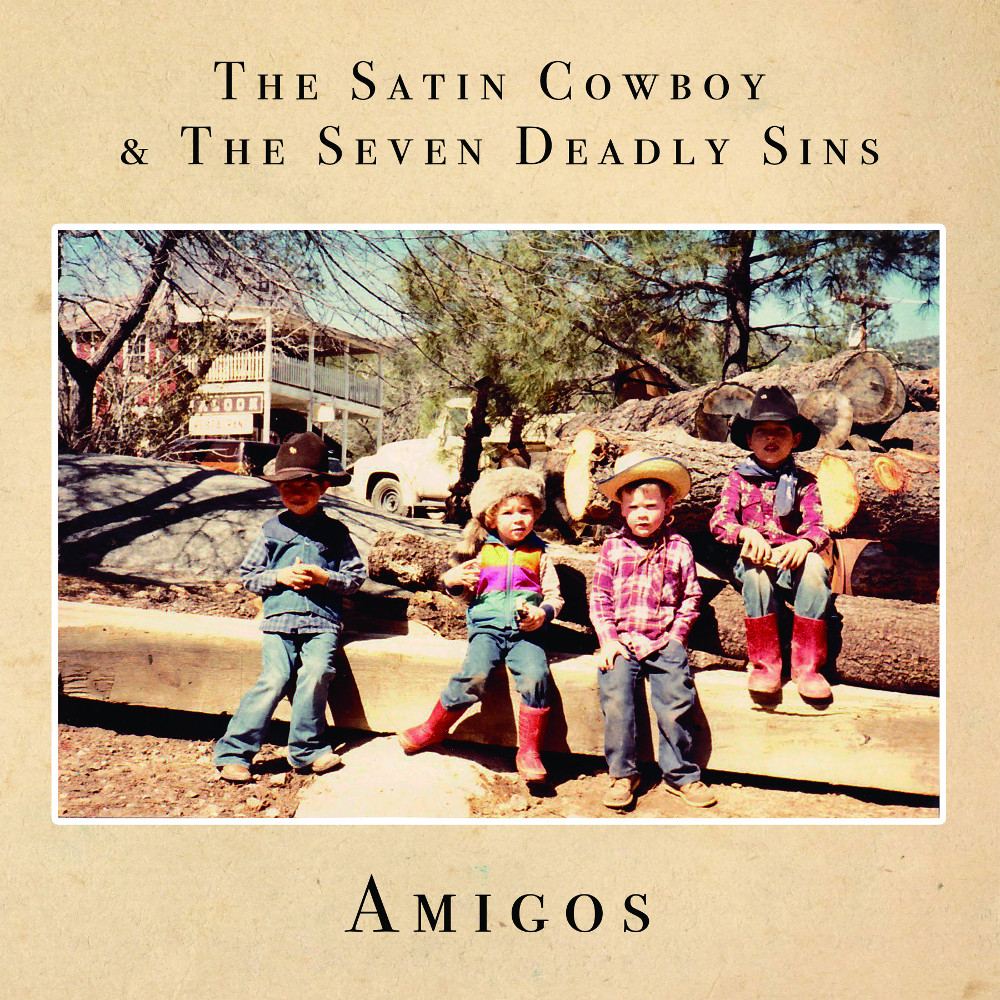A Composer’s Americana Album, Recorded and Mixed the LA Way
Imagine a lone lookout at Prescott National Forest in Arizona, standing watch over a bountiful pocket of America. The 1.25 million-acre preserve is a treasure trove of mountains, lakes, and trees forming a beautiful expanse of sounds and sights.
Looking back, it’s clear to see how this college years-experience as a United States Forest Service lookout shaped the sensibilities of Silas Hite. The prolific Emmy-winning film and TV composer’s band The Satin Cowboy & The Seven Deadly Sins has just released a new album, Amigos, that sparkles and shines with 21st Century Americana. Packed with bluegrass, folk, and old-school country, the record showcases equal parts songcraft, recording acumen, and mixing prowess.

Silas Hite has just released “Amigos”, the new record from his band The Satin Cowboy & the Seven Deadly Sins.
Hite’s heightened musical perspective may start from the solace of that formative fire lookout. Did his intense focus while making outstandingly crisp mixes spring from meditative treks to that secluded forest post?
“Driving through the forest to get to the job could take up to an hour in the morning, and the same going home,” recalls Hite, speaking from his home base near the Los Angeles foothills. “I would listen to music and just think about it on the drive there, and then have all day to think about it and think about what I wanted to create.”
“It’s an incredible thing that most people don’t have the opportunity to experience,” he continues. “In a lookout tower you can follow a train of thought for hours without interruption. Having that time to really slow down and think about what you want to do is incredible. Similarly, as a composer you’re working alone and just in your head quite a bit, problem solving.”
An Ear for Acoustic Instruments
Hite’s powers of musical concentration can easily be heard in his vast composing CV. It’s a portfolio that includes scoring for TV shows such as “Chef’s Table,” “American Pickers,” “Shaggy & Scooby-Doo Get A Clue!,” hundreds of commercials including Apple, McDonalds, and Chevy, video games like The Sims 2, Skate 3, and The Simpsons, plus big corporate scoring/mixing clients like Google.
On Amigos, Hite’s hard-won studio expertise flows artistically, leading to a cohesive 11-song set that highlights smartly structured acoustic instrument arrangements, guest star vocal performances, and catchy hooks. Choice cuts include the rhythmic reflections of “Song for Tom Petty,” the breezy pickings of “Let’s Build a Home,” instantly soul searching immersion in “I’m Coming Through,” and lyrical gems throughout like, “You’d have to be nuts to live through it/and not just say screw it” from the guitar-rich “Looking Back.”
Hite’s ability to make it all work stems from his comfort level with recording a wide range of acoustic instruments in his well-appointed home studio, while thinking ahead to how these diverse sonic flavors will meld in the mix. In SonicScoop’s 2018 coverage of his instrumental album Songs for a Dinner Party, Hite discusses recording the likes of live violin, viola, cello, double bass, mandolin, guitar, and percussion, combined with slightly more modern elements like a 1972 Wurlitzer electric piano.
In Amigos, he applies those skills to myriad acoustic guitars and fiddles, upright bass, accordion, mandolin again, pump organ, drums, percussion, and vocals. For Hite, getting it right means having not only having the confidence to capture these sources well with a mic, but picturing exactly how they’ll converge in the final product—while still being open to tough decisions at crunch time.
“When I’m writing, I’m thinking about instrument combinations that are not only interesting together, but that are going to work well sonically, and the frequency range—how will they complement each other, rather than fight with each other?” he explains. “I write and record at the same time quite a bit, so there’s a lot of experimenting going on. I often find myself with extra pieces at the end that I need to weed out. When I get to the mix stage, it’s really hard knowing what to keep and what not to keep when many parts have been recorded.”
“But I think the best mixes have a lot to do with arrangement. When you listen to songs on the radio, from whatever era, usually there’s really not that many instruments going on at the same time and that’s a big part of why a mix sounds good: There’s not a lot of stuff.”
The next key to Hite’s particularly clear mixes is his extremely simple recording chain. For the vast majority of instrument recordings he’ll pair a vintage Neumann U 47 microphone with Neve 1073 DPA mic pres. For drums and percussion, he’ll switch to an Earthworks SR-25 on kick and TC-25’s for overheads (read more here about his drum mic techniques and eclectic instrument/gear collection.) “I have a very simple path and I try and get a very clean, natural sound,” he notes. “One thing I love about that chain is you really hear the players, the snap of the strings, the buttons on the oboe, or whatever it may be.”
As Hite learned high on that lookout tower, space and time are an asset that must be managed carefully when mixing. He listens through Pelonis Model 4288 monitors, working in Logic, supplemented by iZotope, Sound Toys, and PSP plugins. “After recording, I take a long time to mix because not only am I mixing, but I’m also the producer,” says Hite. “So I’m cleaning things up quite a bit, maybe I’m taking some of those button noises or string noises back out again if they’re distracting, trying different mixes and then living with them.”
“One thing that’s a double-edged sword is giving yourself enough time to have perspective. So, on the one hand, I have to get away from it for a while—a day, maybe a week—to come back and have perspective on how the mix and song are working, and how the parts are living together. The downside of that is, of course, it can take you a long time to finish something and your perfectionism can get the best of you. You’ve got to balance both sides, but I do take a long time when I’m mixing to make sure that everything fits really well, and you can hear and follow each part through.”
Time is also on Hite’s side when it comes to mastering. His relationship with LA-based Hans DeKline (U2, Snoop Dogg, Diplo) stretches back approximately 15 years—an extended collaboration that Hite leverages fully. “I think it’s really important to have a mastering engineer who knows what you want,” he says. “You can have a conversation with them, and if you have to go back and forth a little bit, so be it, but really it’s about trust.”
A Composer’s Approach to Song Arranging
For a drilldown on Hite’s song production thought process, look to the Amigos opening track, “Song for Tom Petty.”
For his heartfelt, gently countrified tribute to the fallen rocker, Hite points to the song’s dual acoustic guitars as the building blocks. “The main melody is being picked out on a Martin,” he says. “Then there was like a harmony that was being implied but wasn’t quite coming out as strongly as I wanted, so I doubled just those notes with a 12-string. Then I’ve got a fiddle coming in, and then upright bass.”
“Something that I’ve learned from scoring is how to deliver different emotions using different instruments, and what instruments are usually best suited for that,” he continues. “In the case of ‘Tom Petty,’ I’m being very vulnerable and honest with the lyrics. It’s a hard song to write without sounding incredibly cheesy, so what I’m trying to do is be very authentic and open and honest. To me, acoustic instruments help you deliver that message better: They’re very raw and natural, there’s no bells and whistles covering anything up. Strings are very expressive, and I think a single fiddle is the most honest approach—you can really hear the person.”
“I’m also playing accordion, which I found is another very human instrument. I use accordion when I need to make the song a little bigger. And then there’s mandolin, which is another honest, human instrument because you can really hear the picking, and it’s just got a very warm, bright pleasing sound. I was trying to not make this song sad, which is why I wanted some brighter sounds from mandolin and accordion to help with that.”
Naturally, Hite chose the vocalist with equal care. “My buddy Sam Nelson is the singer, he’s actually Ricky Nelson‘s youngest son and we’re good friends,” says Hite, who has his own music royalty bloodlines as the nephew of DEVO frontman and acclaimed composer Mark Mothersbaugh. “Sam loves this kind of music. He sang backup on this as well, you can really hear him on the last chorus, his voice really rising above and helping to bring it home.”
Hite’s Neumann U 47 doesn’t just record most of his instruments, it also helps him troubleshoot session problems. “It’s one of those mics where if you put that on an acoustic instrument and it doesn’t sound good, it’s not the mic—it’s the player or the instrument,” he observes. “It’s so warm, and there’s so much detail and clarity in there but without being cold because it is a tube and it’s vintage. It’s so detailed that sometimes I have to let players know, ‘Your nose is whistling and it’s actually picking up quite a bit on the microphone,’ or ‘I can hear a squeak of your tennis shoe.’ It is really sensitive, but I think that’s also where the detail in my mixes comes from.”
In his pursuit of clean sounds that cut through and gel naturally as on Amigos, it’s no surprise that Silas Hite sums up song production quite simply. “If you have a quality chain, quality players, and a decent song arrangement and song,” he concludes, “your mix should work well because all the ingredients are there. Having really good building blocks to work with is the key.”
— David Weiss
Please note: When you buy products through links on this page, we may earn an affiliate commission.











[…] 1 2Next Page ?View Single […]
[…] Looking back, it’s clear to see how this college years-experience as Read more… […]